Purpose
1. Test if heating a hot tub with a Bitcoin asic miner instead of the built-in hot tub heater can be cost parity.
2. Contribute to the global hash rate and security of the Bitcoin network.
Goal
The goal was not to save money, as you may find parts cheaper elsewhere, but rather to make the setup as simple as possible.
Safety Warning
We are combining liquid and electronics. At best, nothing goes wrong. At worst, you get water on the asic and kill it, or yourself. The potential exists for a shocking wake-up call; electrocution. So we would advise only using an outlet with a properly tested and functioning gfci breaker. This how-to is for demonstration purposes only. Mixing water and electricity can be dangerous. Please get an electrician to assist if you are unfamiliar with safety aspects.
Walkthrough:
Purchase list:
Tools:
Power drill
Assortment of drill bits
Pliers
Scissors
Screwdriver set
Double sided sticky tape
Parts:
1. S9 Water Cooling Kit
We chose this because it is a complete kit. It comes with 4 cooling plates to sandwich the 3 asic boards, correctly sized thermal transfer pads, sandwich brackets, and long bolts and nuts to hold the whole thing together.
https://www.ebay.com/itm/144177403314
2. Plastic storage tub with a flat bottom to house the miner.
3. Plastic storage bin to act as a water reservoir.
https://www.walmart.com/ip/Sterilite-18-Gallon-Tote-Box-Plastic-Titanium/897868446
4. A 50ft coil of stainless steel tubing to transfer the heat to the hot tub water.
Amazon.com: Jockey Box Coil 3/8-inch 50' Stainless Steel Tubing: Home & Kitchen
5. 25ft of poly tubing from Home Depot
This is the hard line tubing to run from the stainless hot tub coil into the water pump.
Part #841804100134
6. High temp capable water pump to circulate our water loop.
7. 3 or more gallons of distilled water to fill our reservoir. A more permanent version of this setup could substitute food grade propylene glycol, and perhaps substitute automotive grade rubber or silicone radiator/fuel hoses as they are higher temp, offer more insulation, and seal easier around fittings.
8. Stainless clips for pex tubing
https://www.amazon.com/dp/B087WLBB5J?psc=1&ref=ppx_yo2ov_dt_b_product_details
9. Teflon tape- used around the joint to the stainless steel coil.
10. For remote temperature monitoring of the hot tub
CLOUDCOM B1, Smart Thermo-Hygrometer with Data App, 12 ft. Sensor Probe - AC Infinity
11. For miner connectivity, a network extender with ethernet port:
12. We used an Intex PureSpa 4 person inflatable hot tub:
Prepping the S9.
Install Braiins: https://braiins.com. Depending on how your S9 is configured, you may need to hop in their telegram group to troubleshoot the right way to install: https://t.me/BraiinsOS. We had issues with this particular S9 and their team was extremely helpful and responsive.
Once installed, you access the Braiins software by typing in the static IP of your miner. From there, you can throttle your miner’s power consumption up or down, adjust chip temperature targets, enable autotuning, etc.
The Build
Step 1: Disassemble the Miner
Tools required: Phillips screwdriver, clean dry non-metallic workspace.
Unplug power and ethernet cords from miner.
Remove screws from fans and control board cover, unplug all power cables, both fans and 3 asic board cables. Then slide board out of housing and set aside.
Slide 3 asic boards out and gently blow them off with compressed air, there are many s9 cleaning guides available.
Step 2: The Sandwich
Tools required: pliers.
Place all the cooling plates down, measure 1 inch from the nipple and mark with a sharpie. Then install the thermal transfer pads on top of all of the cooling plates, leaving the protective film on the top side of the pads.
Remove the protective film on the first cooling plate, and carefully place the asic board on top, with the power connections opposite the nipples on the cooling plate. Continue stacking all the others on top until you have a full sandwich, 4 cooling plates with the asic boards between.
Take the 2 metal plates and long bolts, place through one plate and place down on work surface, then place asic sandwich on top of the other metal plate, and tighten it all together snugly (more than finger tight, but don’t crank on it like you’re trying to kill it.)
Use the 3m double sided sticky tape and attach the control board to the top of the sandwich and plug in the 3 asic data cables.
Congrats, the easy part is done.
Step 3: Tube Assembly
Tools required: scissors, pliers.
Relocate the large nipple on the manifold from the bottom to the side. These simply unscrew and have o-rings. They do not require being overly tightened.
Cut 8 sections of tubing around 5” long.
Step 4: Creating a Miner Housing
Tools: Sharpie, drill, ¾ drill bit, knife.
Set the tub upside down, and place the miner down on top of it. Using a sharpie, mark circles around each nipple for drilling, then remove miner and drill the holes
Place circular metal fan cover against plastic tub and mark the circle with sharpie, then carefully cut out with a box knife. Using fan as template, mark and drill screw holes and install fans.
Cut small 3x3 inch flap into side of plastic tub to feed electrical lines through.
Step 5: Testing Nipple Holes
Step 6: Stick It!
Place spacers on ground and place tub down, place double side sticky tape on bottom of each cold plate between the nipples, and install the miner into plastic tub as shown with sticky tape.
For extra security to hold the miner down, use some large zip ties and cut holes through the bottom of the tub to secure the miner.
Step 7: You’re Putting Those Where?
Now we can flip over the plastic tub again and get all the plumbing fittings ready. There are 2 things of primary importance here: we want no leaks, but also no kinks. Take the blue manifolds and lay them out next to the miner.
Install all the hoses on the nipples
Step 8: Crimp the Clamps
Tools: single ear hose clamps and crimper.
Line up the clamp on the hose, right after the bump in the nipple, and carefully crimp the clamp.
Step 9: Freak-A-Leak
Repeat crimping 8 times.
Step 10: Kriss-Kross
Connect tubing to the manifolds and install the hose clamps.
Step 11: The Hook-up
Tools: scissors, crimper.
Measure the length you want for the hard line from the miner housing to the hot tub, and cut the line to feed the stainless steel coil that will live in the hot tub.
Crimp the hot tub lines to the stainless coil.
Measure a shorter piece of the soft silicone tubing to go from the reservoir where the pump will live.
Place the miner tub on its side, and connect the lines from the hot tub and reservoir, crimp them on both sides.
Step 12: Pump It, Pump It Real Good
Fill your reservoir with several gallons of water.
Install pump and connect the line that feeds to the miner, to the top of the pump (the pressure side).
Plug in 12v pump line so it turns on and look for leaks.
Step 13: Under Pressure
Look for more leaks.
Place your finger over the end of the return line into the reservoir so it pressurizes the loop a little bit to ensure there are no hidden leaks.
Step 14: Burp the Baby
For this step, please ensure the miner is not plugged into any power source. It's good to have a helper on this step, both for safety and to keep the pipes from getting kinky.
Now that we are sure there are no leaks, we are going to flip the miner upside down to get any air pockets out of the cooling plates.
Carefully flip the miner upside down, and you will see a rush of air bubbles.
Repeat this step until you see no air bubbles in the system. This will ensure that when the S9 tunes itself, all the chips will be nice and cold with no hot spots in the cooling plate.
Step 15: Start Mining Magic Internet Money
Perform the setup procedure for the wireless adapter and plug it into the miner with an ethernet cable.
Turn on the miner, connect to its IP address, and ensure it begins hashing .
Place the heat exchanger into the hot tub. If extra heat efficiency is desired, add some insulation to the tubing and around the outside of the reservoir. This is all a work in progress. Substitutions of better products or ideas are encouraged but most importantly, be safe. Safety is always #1 priority!
Final Walkthrough
The Test
We started running the S9 at 1000w as that is what we typically have it set when using it as a space heater in the winter. It is also most efficient at that power setting.
At first, our target temperature for the Hot Tub Mine Machine was 100-102°F, as that is the ideal use temperature. At 1000w, the temperature was rising too quickly so we throttled down to 700w. Every time you change the power consumption, the Braiins autotuning can take up to 6 hours to tune. So you want to let it finish tuning before you jump to any conclusions. At 700w, the temperature rose to 105°F. Too hot. At 500w, the temperature held between 99-100°F. Just right.
500w seemed like a good base (and we could boost the tub a couple degrees if needed with the main hot tub heater), but the outside temperature shifted drastically and the hot tub temperature sank to 92°F. The chip temperature dropped to 54°C. We live in Northern California and it’s pretty common to have 50 degree temperature shifts between day and night in the summer.
We then boosted the power consumption to 600w and let it autotune. The chip temperature rose close to 60°C and the hot tub temperature started going back up. This was close to the previous chip temperature that heated the tub to 99-100°F.
So we wondered if there was a way to keep the chip temperature at 60°C and have Braiins do dynamic power scaling to throttle the power consumption up and down to keep the chip temperature constant. Unfortunately, the only way to do this currently is to run a script. As neither one of us knew how to code, that was not going to happen. (Note: we did try the dynamic power scaling - setting the chip target to 60°C, but the software jumped around and really couldn’t figure it out. The efficiency was very poor, it never really tuned itself, and it ran the fan continuously at 100%).
Braiins (OS+) does however store your previous autotunes. So we let it tune at 800w, 700W, 600W, and 500W, so we could switch back and forth as needed depending on the ambient temperature and would not have to wait for a 6-hour tune.
We found a chip temperature between 60-69°C to be ideal for maintaining hot tub heat levels of 99-100°F degrees during ambient temperatures of 50-100°F.
We used a power meter to measure the power consumption of the following:
Miner: 835w (set at 800w)
Recirculation Pump: 10w
Internet: less than 1w
Hot tub pump: 40w (this is the recirculation pump built into the hot tub that runs continuously, not the heater)
The Results:
Running just the hot tub heater
We ran the power meter and found the hot tub heater to use 17.76kwh for 48 hours, set at the base temperature of 96°F at ambient temperature range 50-100°F. This averages out to 370 watts per hour.
Running the hot tub heater costs $2.57 per day at our highest energy tier of $.29/kWh.
Running just the miner
The hot tub average temperature with the miner running at 500w is 96°F (ranging 92-100) at ambient temperature range 50-100°F.
At this current moment in time, bitcoin is $23.8k and the hash rate is 192.93 EH/s. At 500w, the miner’s hash rate is 6.15 TH/s (slightly more efficient at 600w and 700w).
Running the miner at 500w costs $3.49 per day at $.29/kWh. Once you calculate the sats earned it comes out to a net cost of $2.00 per day.
We save 57 cents (about 2500 sats) per day using the miner.
Note: during the days of testing, the ambient temperatures were the exact same every day. Overnight and mornings would drop to 50°F and by the afternoon would reach 100°F.
We’re currently in a bear market and the bitcoin price is very low. The breakeven price right now for free heating is when the bitcoin price hits $40k (assuming hash rate doesn’t change).
By running the miner slightly hotter at 600w and 700w, the efficiency is greater and gets us closer to the desired use temperature (100-102°F). Our plan is to keep the base temperature around 96°F when not in use, and turn the power usage up a few hours before use - the same as we would the regular hot tub heater.
Note: We are using a 5-year-old miner. Any of the new gen S19 miners would be break-even or profitable at current prices and hash rate.

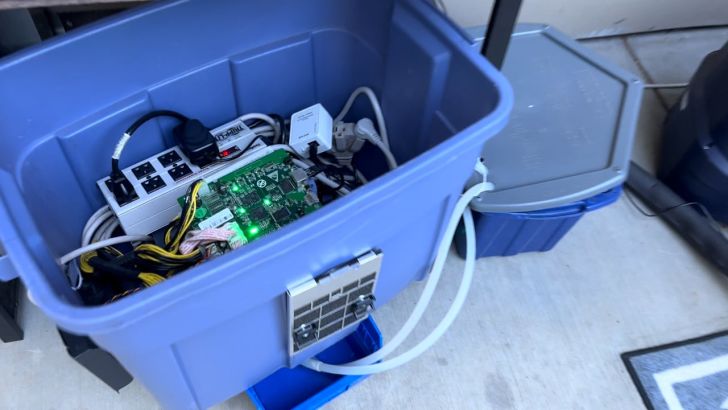





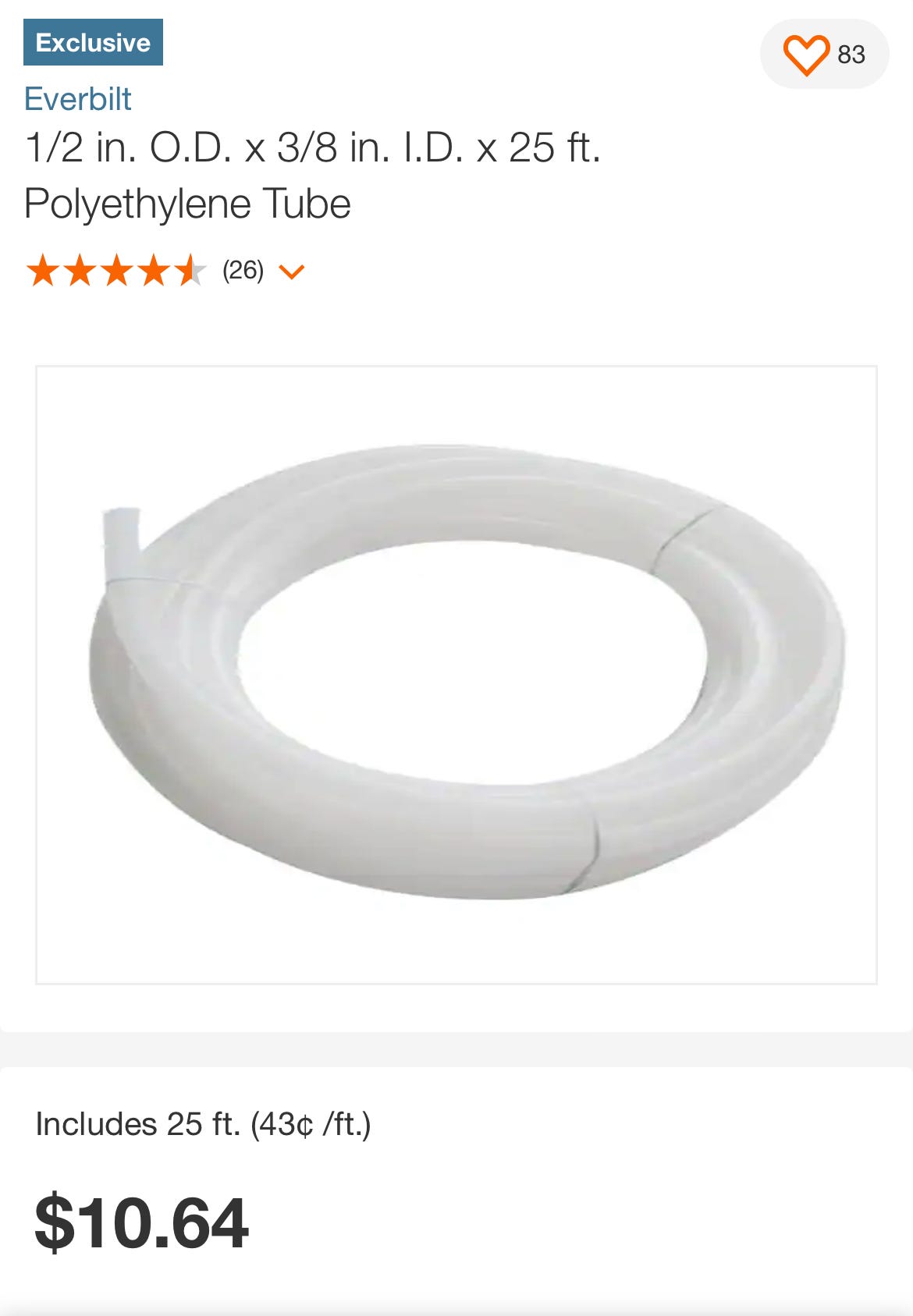



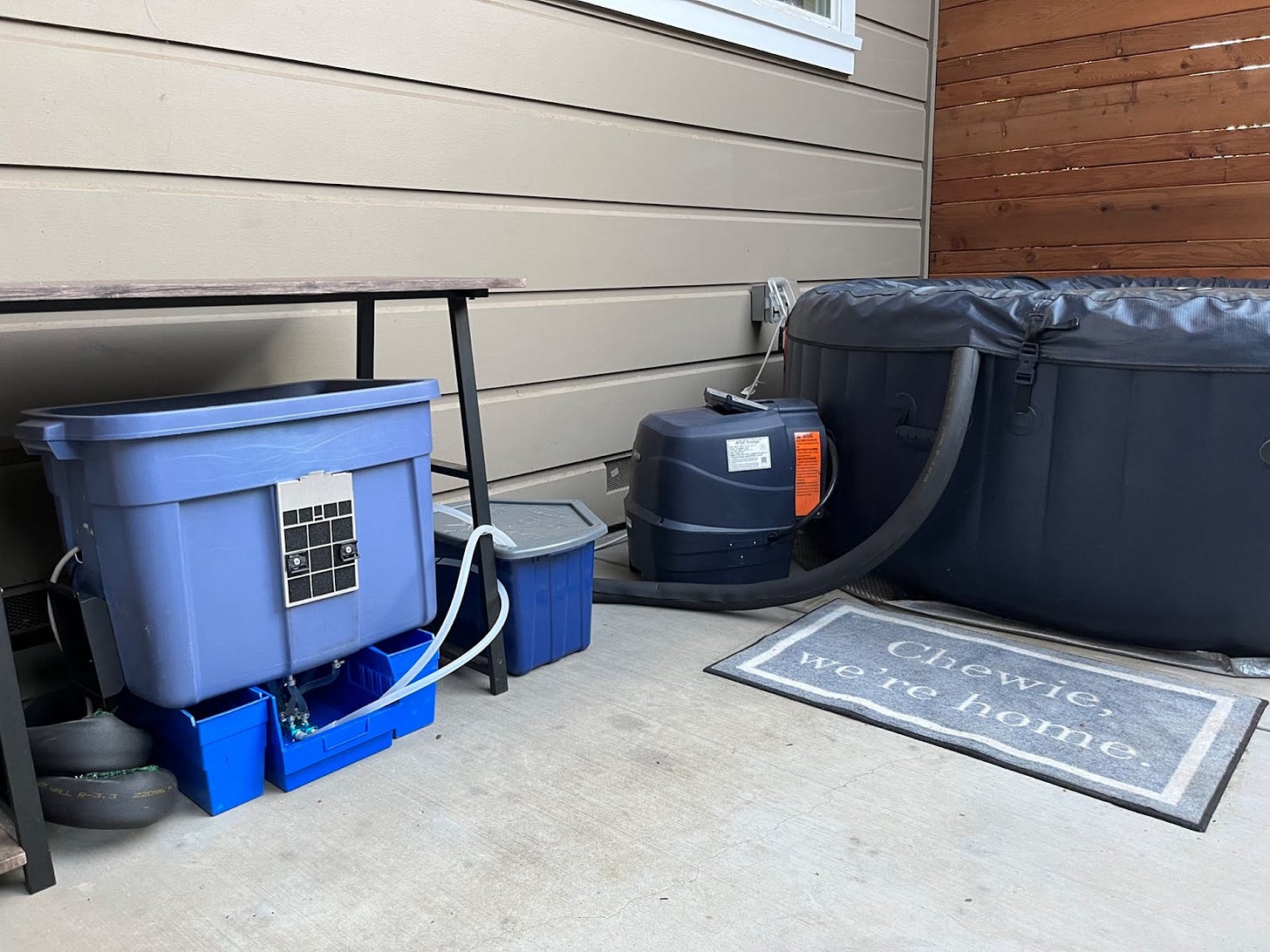

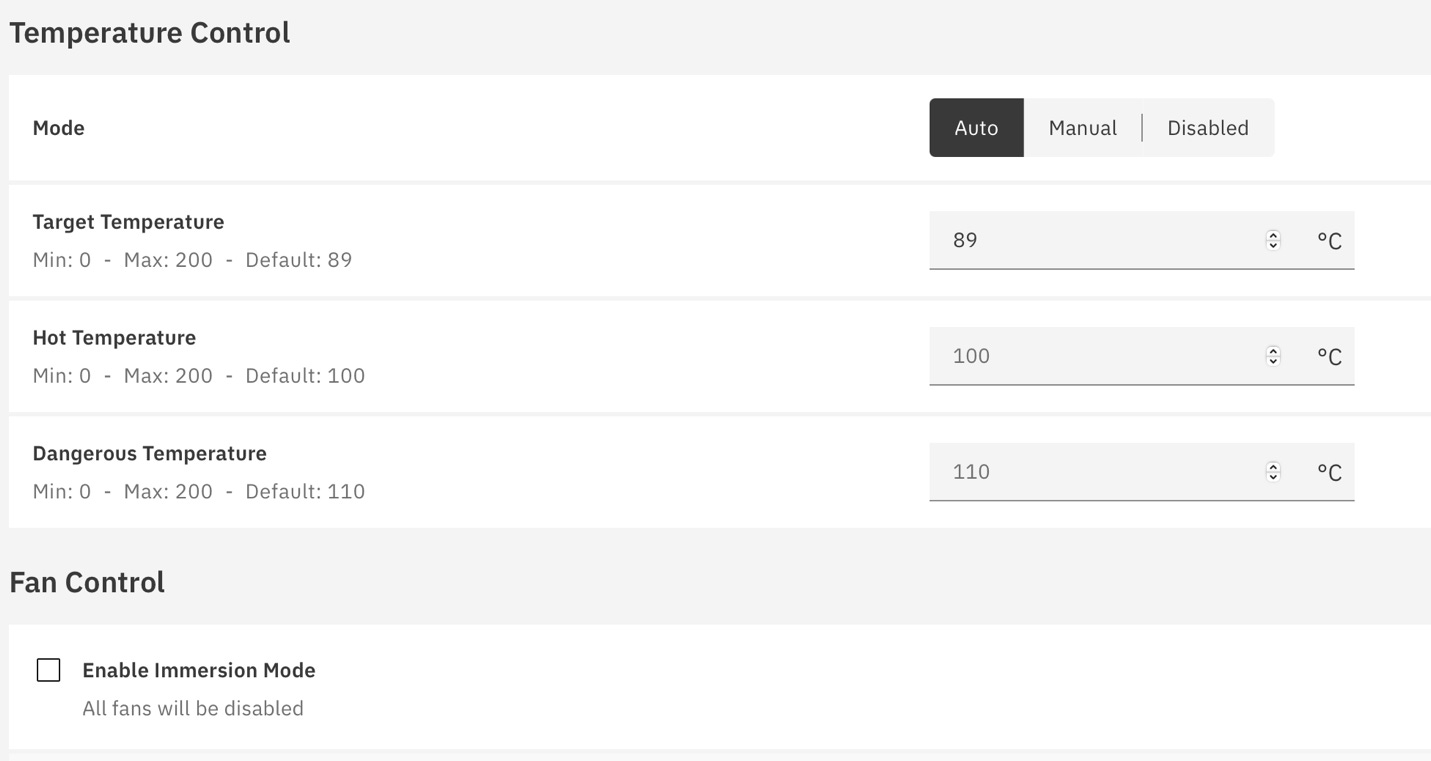
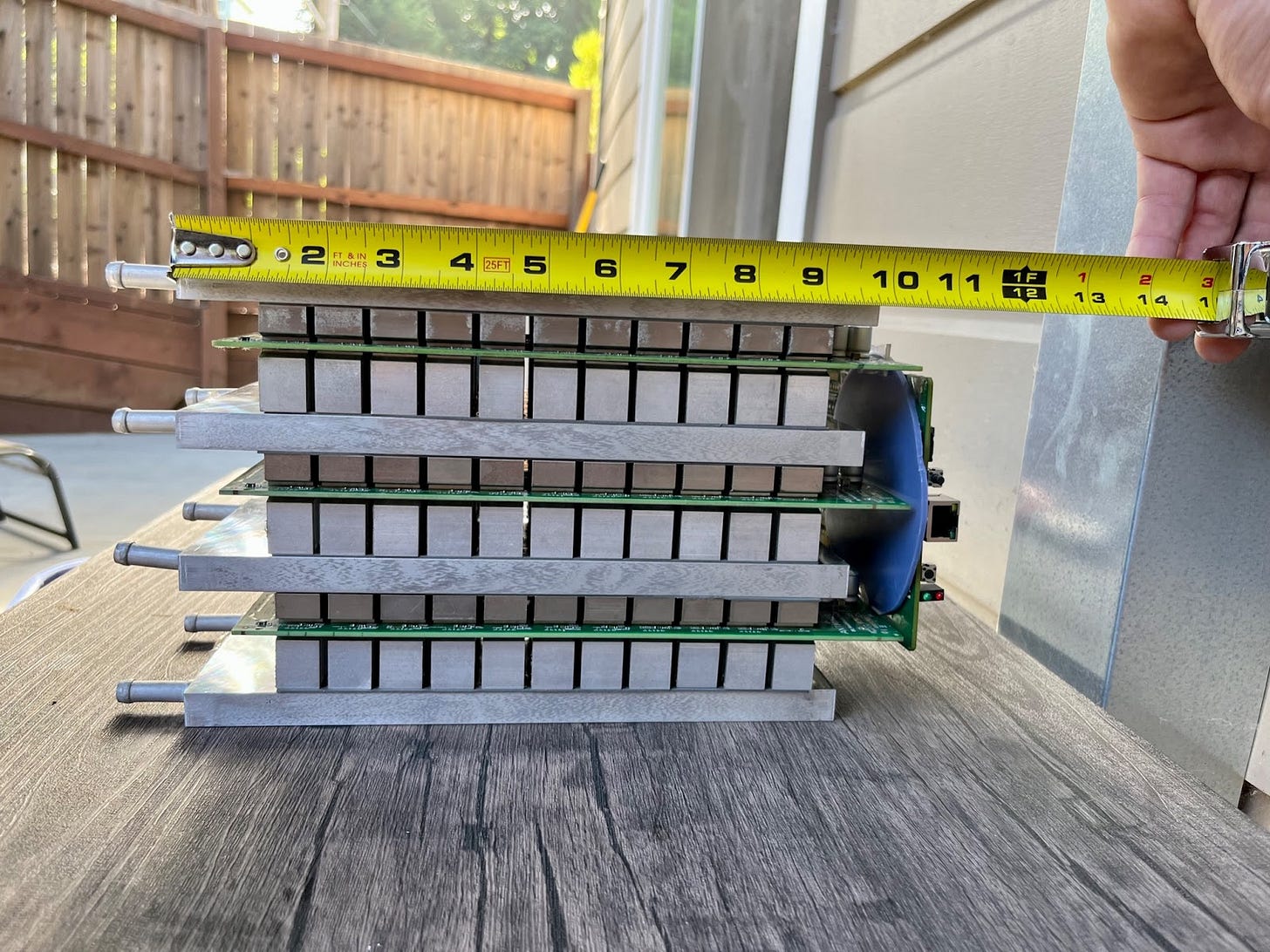

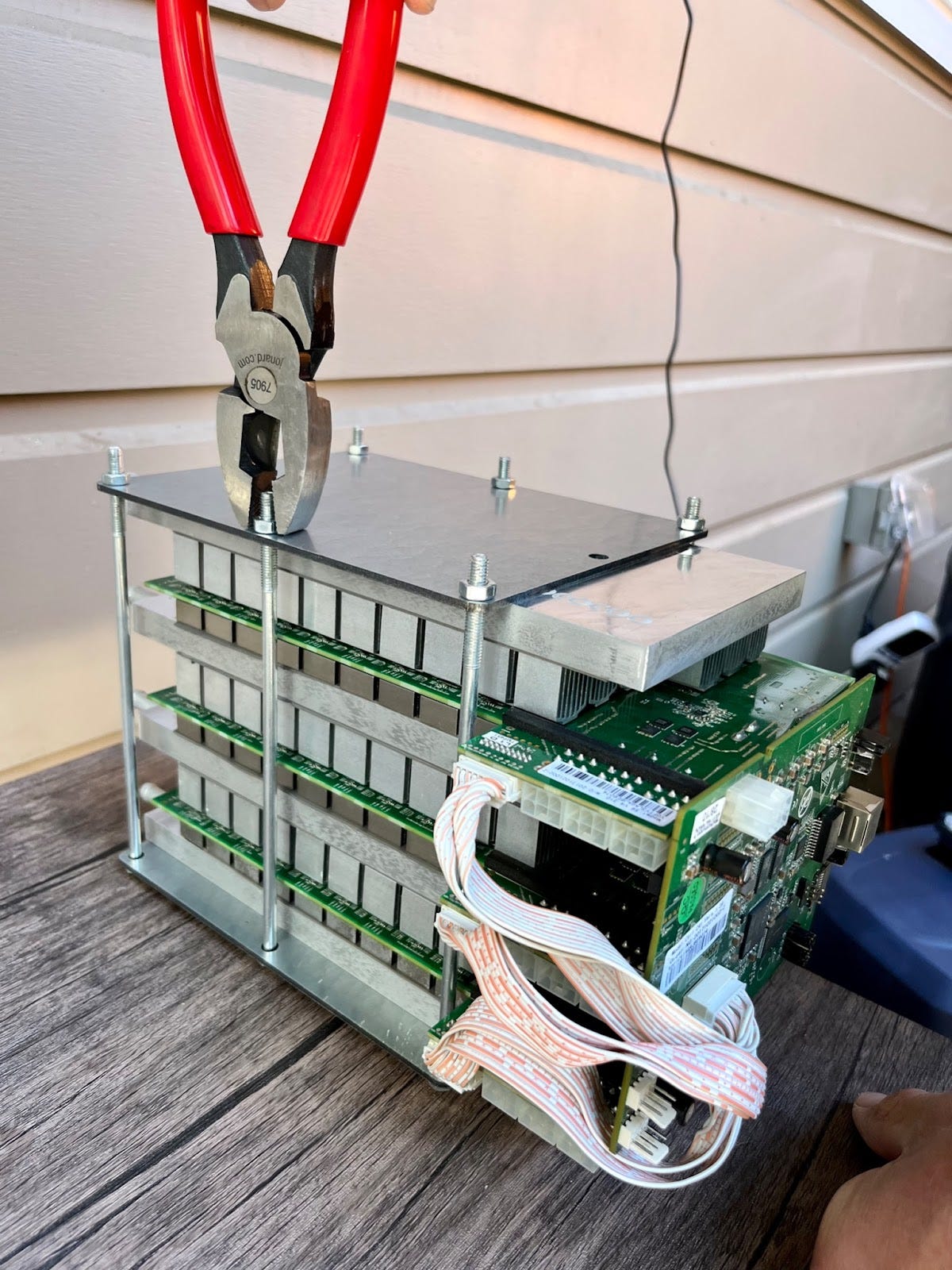




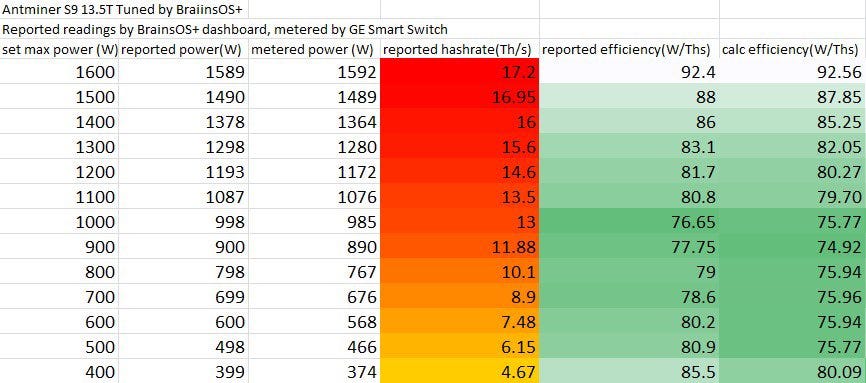


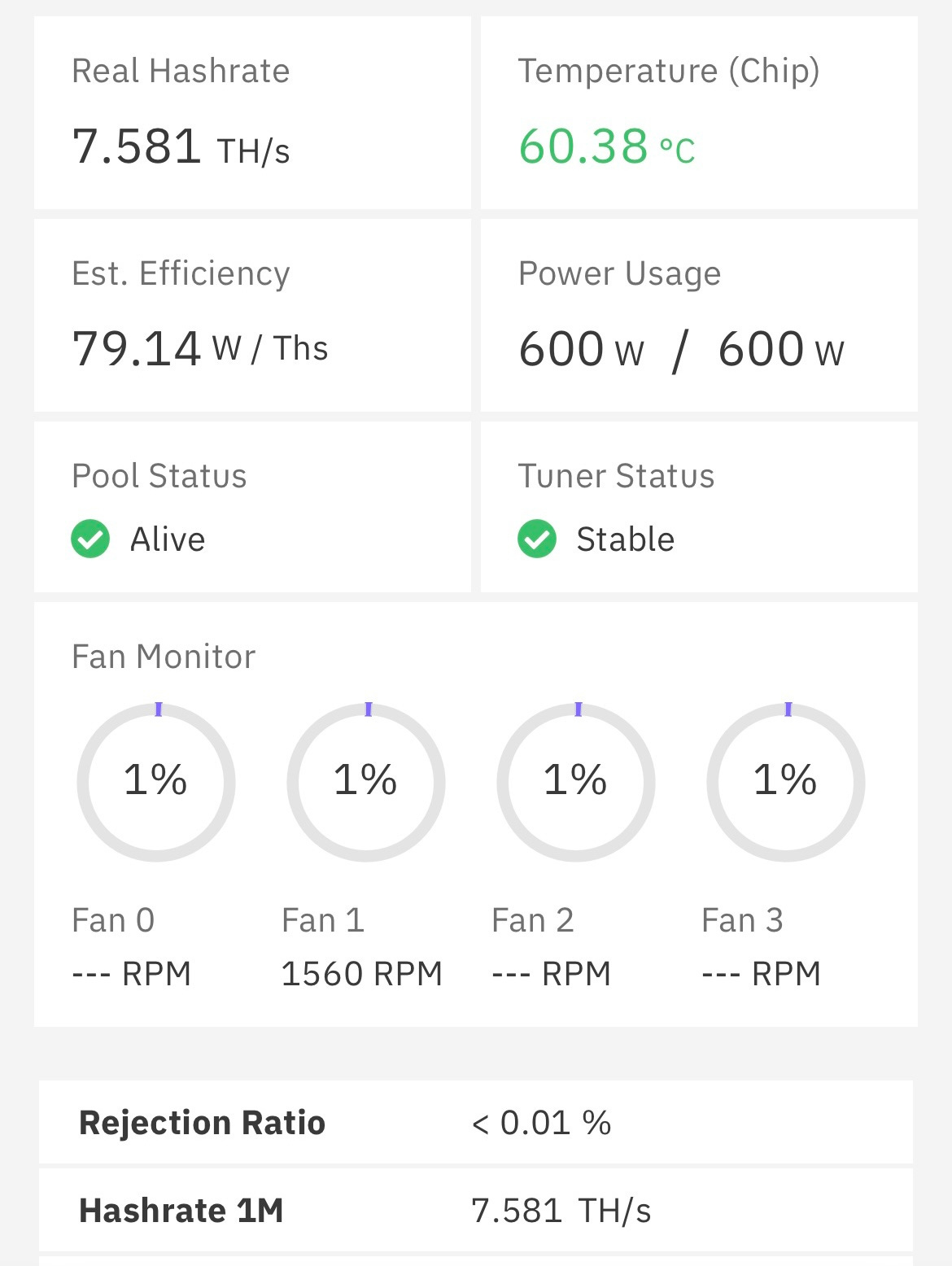



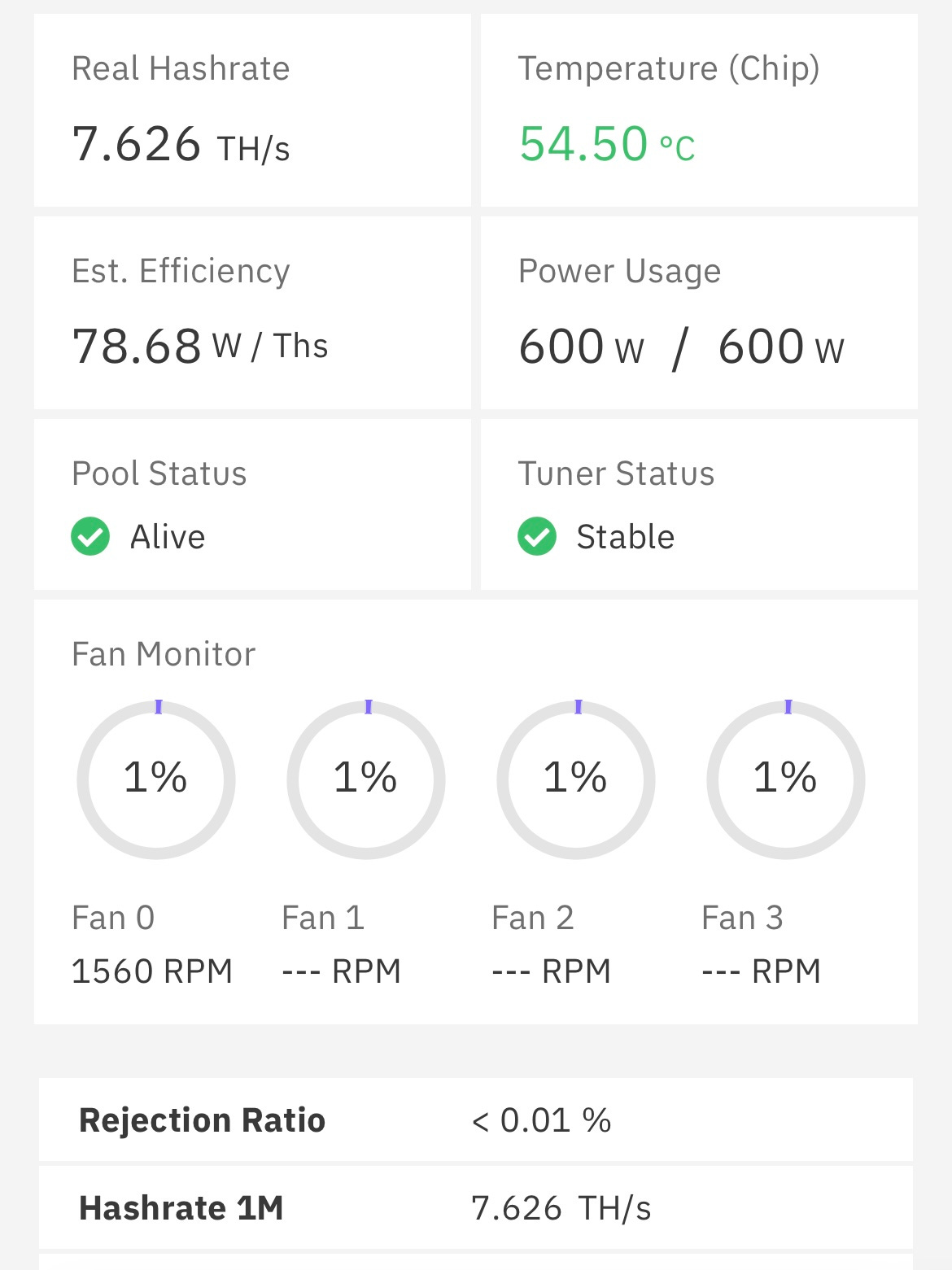


Excellent write you two
So cool